AI – The train publishers can’t afford to miss
Key Take Aways from the INMA World Congress of News Media 2023
Coming back from the INMA World Congress of News Media it’s a pleasure to sort back through more than ten pages of notes and distil some of the learnings we gathered.
A big theme was obviously generative AI, but aside from discussing the challenges that we all work together to solve, there were also a lot of reminders about the importance of journalism and the guiding “partner in life” role that publishers can reclaim in people’s lives.
Bundles becoming a lever for growth
Schibsted plans to double their subscription base by 2025. Not an easy feat when almost half of the adult population already has a paying relationship with them. The plan to get there is identifying the relevant audience segments (eg life long learners, news junkies, sport lovers..) and creating valuable offers for them. This will be with existing products, new products or product combinations.
Product combinations
After launching a first bundle offer including a rich mix of articles and podcasts from different Schibsted titles, the team became convinced of the power of the bundle. The offer attracted 25.000 subscribers (mainly from the already existing subscriber base). This allowed for a better service, higher ARPU and better data without an observed effect on cannibalisation.
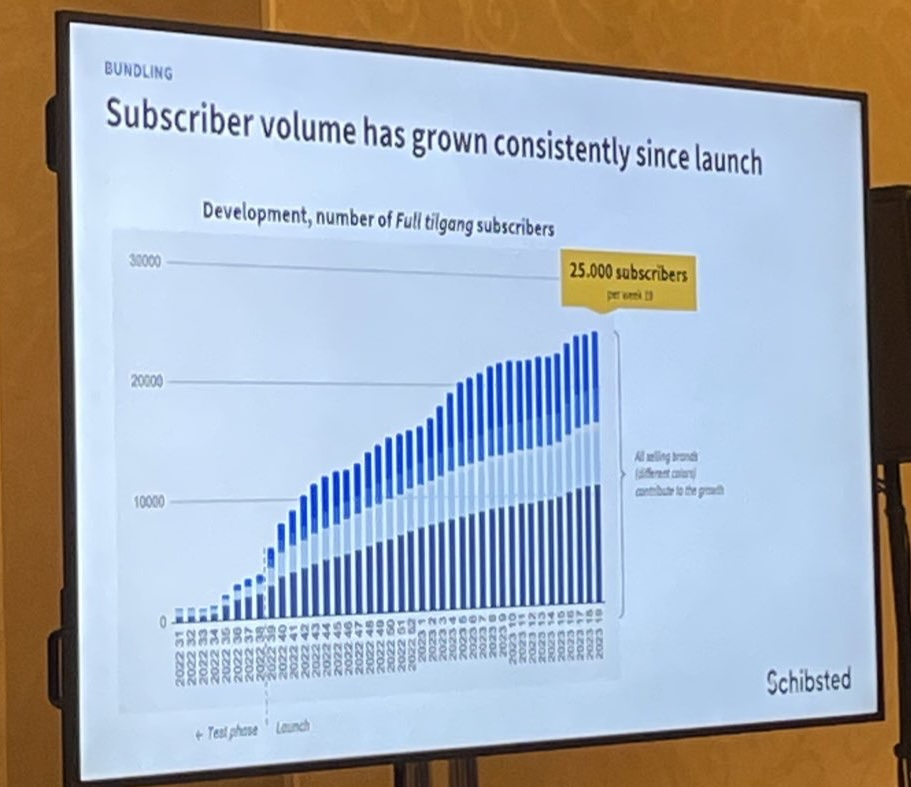
In her speech, Siv Tveintnes touched as well on some of the new challenges that come with a bundle approach. For instance the expectations of readers to have a “My Page” where they can manage their profile across titles. There is still a gap to close in terms of tech and integrated product experience before we can do bundles right.
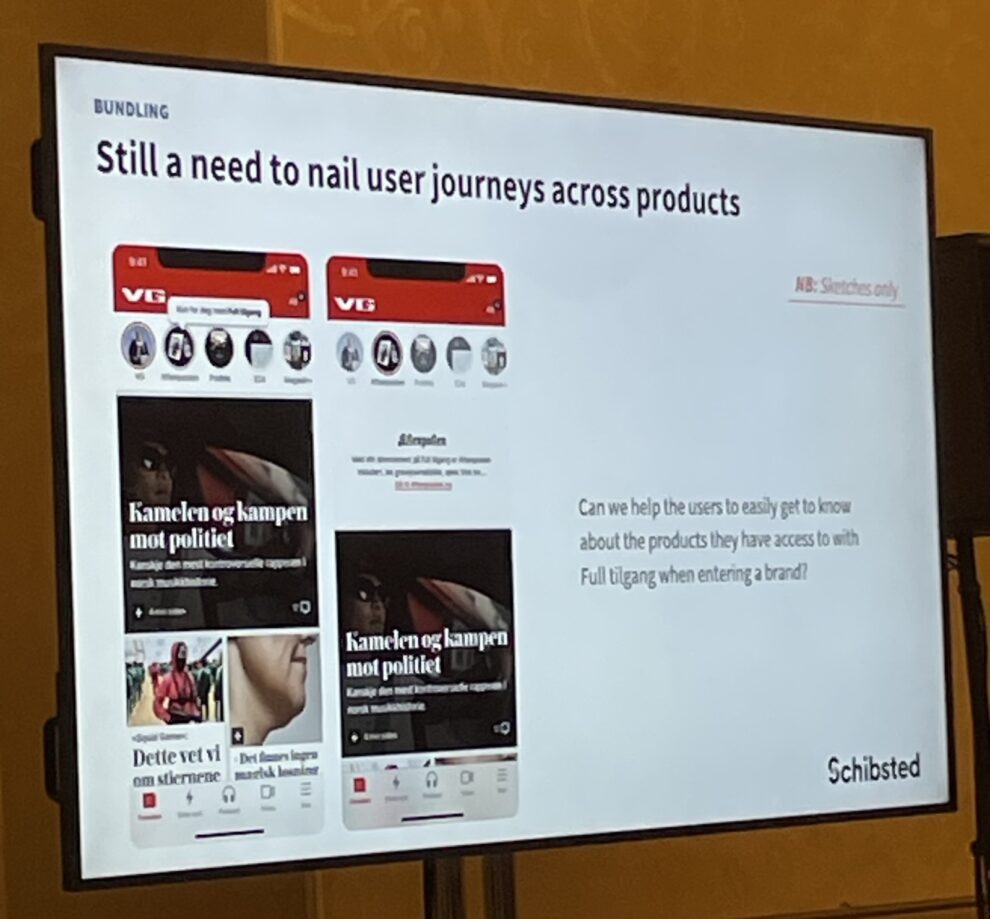
The bundle strategy is being backed by similar offers at New York Times and Mediahuis. We heard both Hannah Yang and Gert Ysebaert touching on the importance of the bundle for upgrading existing subscribers or creating more valuable offers for new subscribers.
📈 Increasing loyalty of new and existing subscribers remains a big focus at Schibsted as retention is only as high as 13% after the first year and 60-70% of sales are lost at the first payment.
A partner during moments of truth in reader’s lives
We were proud to see the great work done by our customer Advance Local highlighted on stage. Lamar Graham brought fascinating cases of reader revenue growth. Being a guide and partner at moments of truth in the life of the reader is essential for reclaiming a role in the community especially in local journalism where Advance Local focuses.
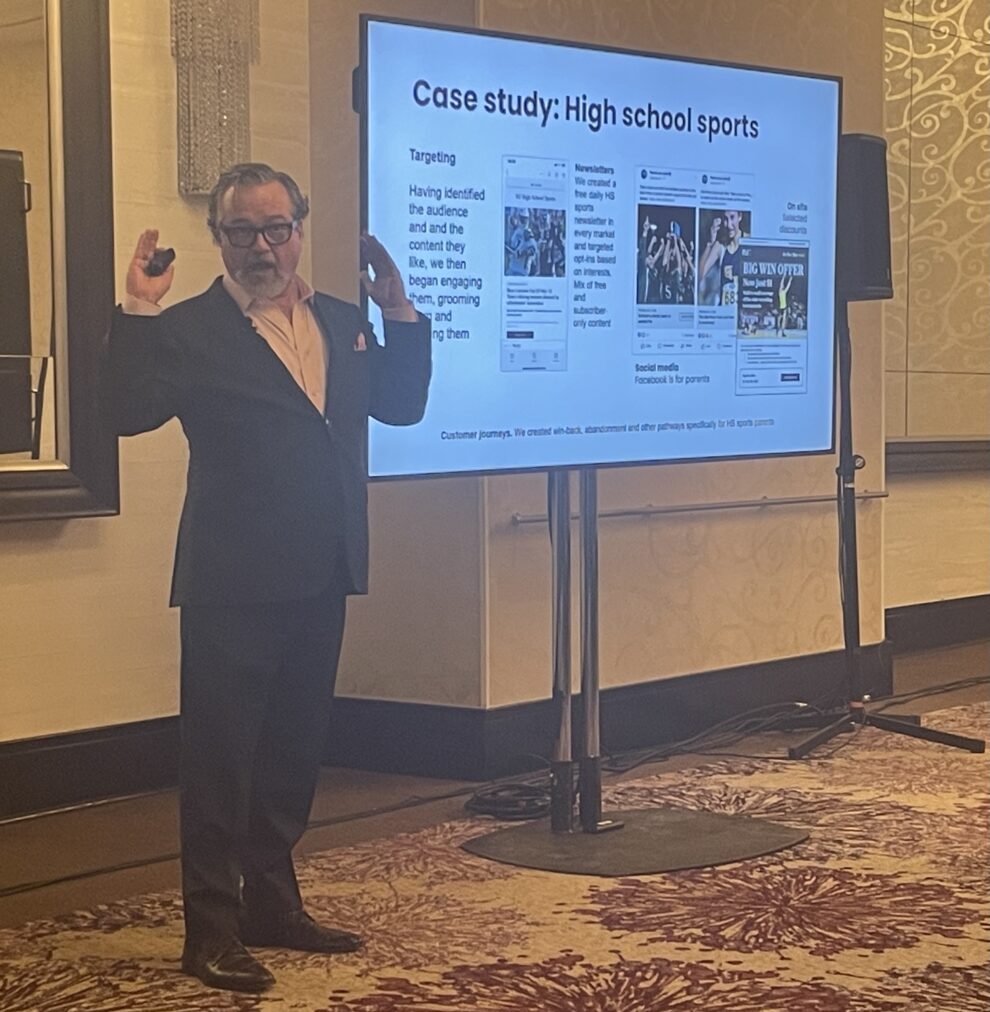
Lamar highlighted the success they have seen with refreshing ideas like:
- Covering high school sports with truly local impact (“the stuff that not everyone covers”) and increasing conversions by targeting parents of high school students via Facebook
- Connecting with the community – a service of 3.99$ allows readers to subscribe to an SMS service where they can submit questions to podcast hosts
- Covering Prom Day: Prom Day is really big in the US and the team has seen many subscriptions being sold for coverage of this important moment in the readers life. When observing that 67% of subscribers churned after the prom day, Advance Local focused instead on offering day passes; this allowed to de-anonymise readers and “start building a genuine relationship that is not initiated with buyers remorse”
In the same spirit of reclaiming the role of partner in life, A.G. Sulzberger used the metaphor of becoming a full service restaurant again. Newspapers can serve an amazing amount of needs from education to inspiration, sports, games, events.
🤩 The case study of Advance Local‘s The Lede digital-only publications in Alabama, was discussed in the Study Tour preceding the congress and was appreciated by many as a great example of innovation in a world beyond print. The Lede is co-designed with our teams at Twipe and leveraging Twipe NextGen technology.
More open and bold conversations about pricing experiments
The topic of pricing is not addressed enough in discussions about the future of news. It was refreshing to hear leaders daring to charge more for the valuable journalism at different moments in the journey.
“You should always give people the chance to spend more money with you” – Karl Wells, The Information
Anjali Iyer explained how her team introduced a 2 step-up process to move Washington Post‘s trial readers aways from discounts. Two emails are now being sent to readers who are due for price increase, one reinforcing the value and the second one creating urgency to act. This strategy led to 2pp increase on retention and an incremental revenue of 6$ per subscriber.
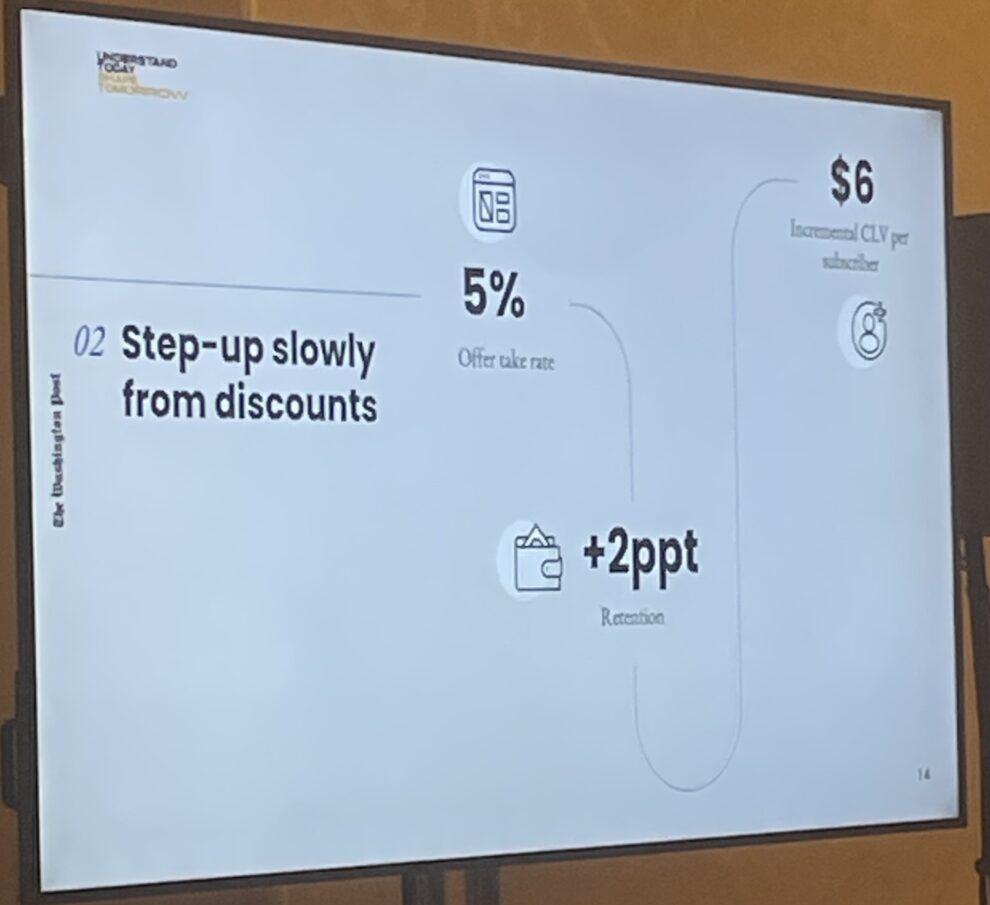
Gert Ysebaert urged publishers to stop comparing themselves with Netflix and Spotify and create their own new category. Research has shown that people would be willing to pay higher subscription prices so a bold goal would be to dare to charge for digital products at the same price as print. This is something that has been tried by publishers in the German market. Bundles will also help in this regard to create meaningful upgrade journeys.
💡 The topic of day passes and “casual payments” which was a hype 8-10 years ago seemed to receive a new enthusiasm by many publishers present at the Congress as something worth testing again.
Automation and AI proliferation but with a human touch
Automation, generative AI and ChatGPT came back almost in every session from the congress agenda. The themes were generally around guidelines and practical ways of making use of such technologies, but throughout all the presentations, panels and side conversations it was clear that after missing the search train and the social train, the Generative AI train is one that the industry can not miss.
“This is a train we can not miss” – Thomas Schulz Homberg, CEO KSTA Medien
Mediahuis introduced a 7-steps framework for use of AI and Alessandro Alviani from Ippen in Germany shared their 4 principles for use of AI:
- AI must subordinate to editorial and organizational values
- Transparency towards readers and editors
- Responsible use; “if something goes wrong is not the algorithms fault it is our fault”
- Human in the loop: There is no such thing as full automation
The teams at Ippen and Schibsted have integrated in their editorial systems AI tools that gives suggestions for lead articles. They also use AI to place info boxes on the website for topics like weather and … horoscopes :).
For automatically drafted content (such as crime reports based on press release) a text analysis tool signals to the Ippen editorial teams what could be the sensitive information. This must then be double checked by the teams.
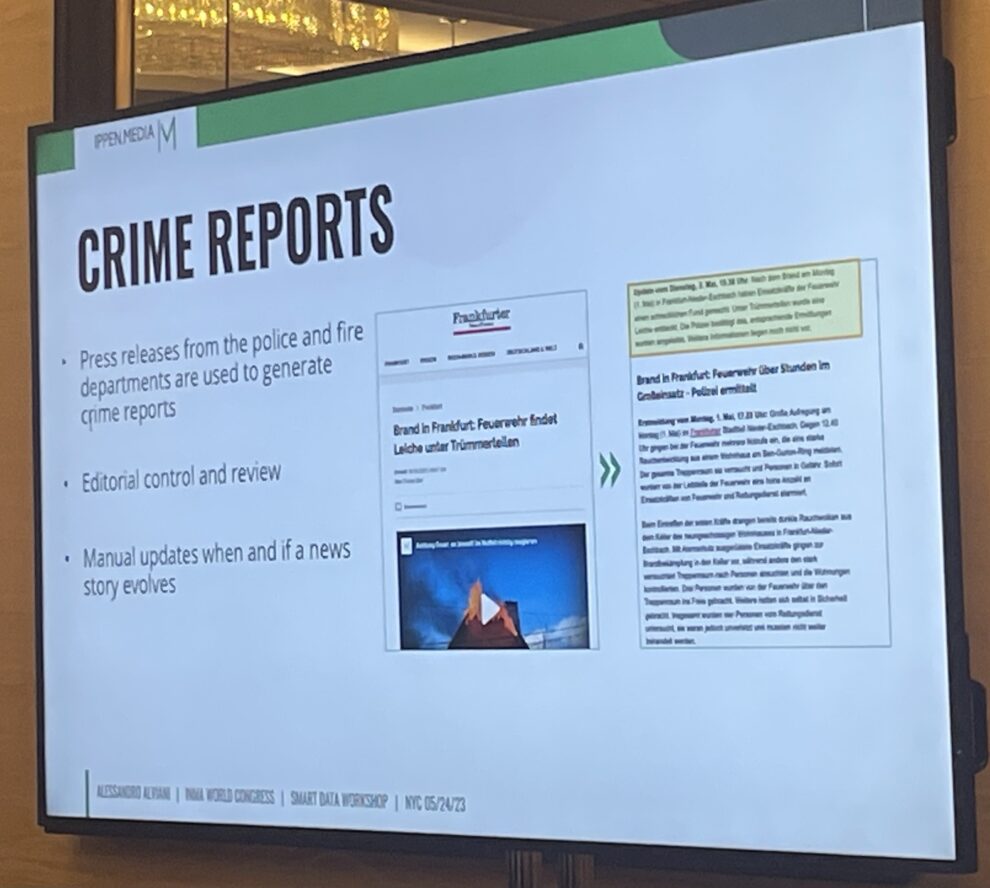
Gert Ysebaert made the distinction between content and journalism pointing that content generation can be automated but journalism not. Journalism has the human perspective. A similar thought was brought by Robert Thomson in his interview with Robert Whitehead: “AI will make journalism less prosaic.”
But one element we heard more than ever in all AI related talks was the importance of the human in the loop. Gannett’s Jessica Davis flagged the importance of finding the balance while Niddal Salah-Eldin from Axel Springer advised everyone be open and “shake hands” with the changes and unknowns that are coming ahead.
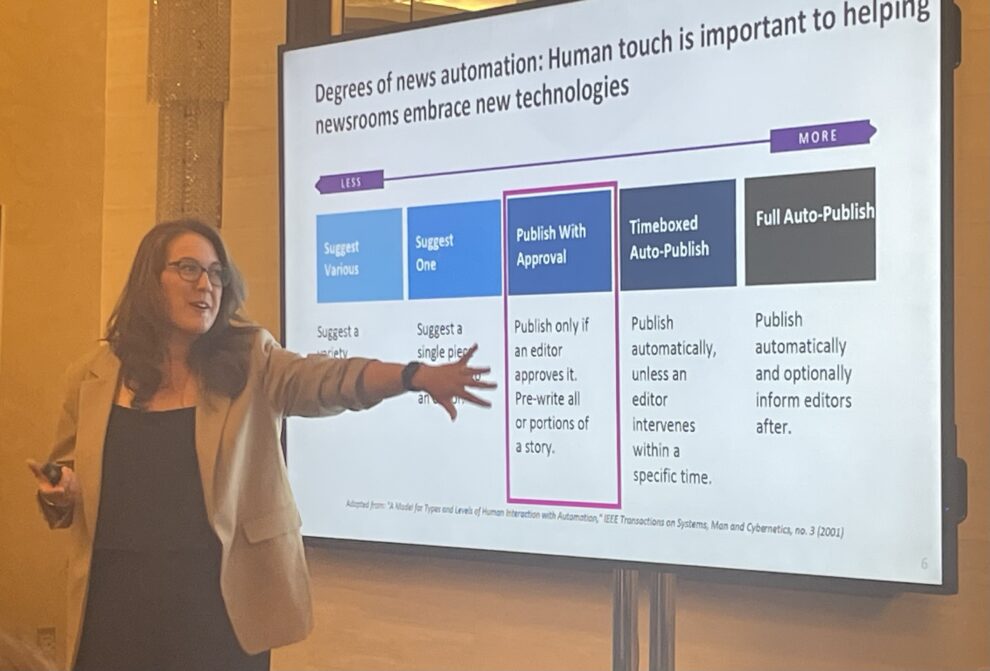
👀 Ippen is also actively hiring an AI Prompt Editor so certainly a case to watch.
We are too boring for GenZ
GenZ are willing to engage with news and also pay for news, maybe even more so than Gen Y (“Millennials”) according to research quoted by Mediahuis‘s Gert Yesbaert. However, we are yet to find the right formula to prove value to them. This was the overarching vibe of the last part of the congress which focused on GenZ.
One clear take away was that we are too boring for Gen Z. They have a high appetite for wit and humour which is something that news organisations must learn to incorporate in their formats. Claudia Mann from Kleine Zeitung showed a simple example of the same story formatted for consumption for older readers vs Gen Z readers.
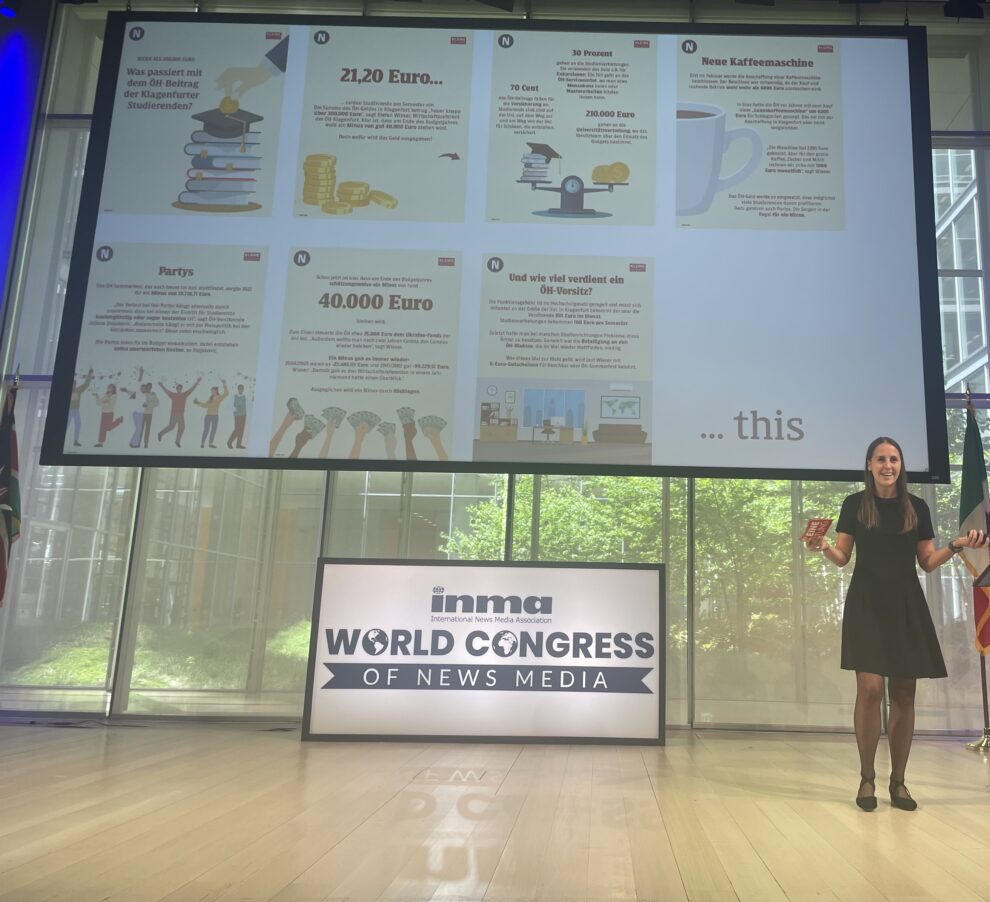
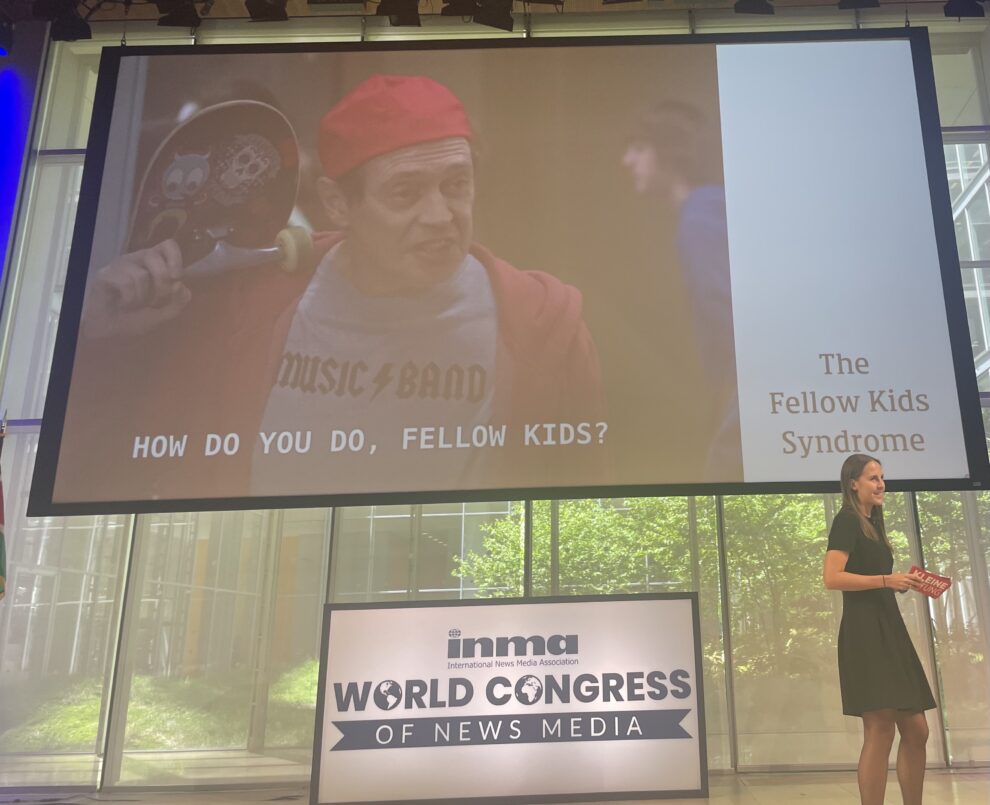

She also spoke about the need to be authentic and intentional about creating touch points, not conversions and not subscriptions when addressing Gen Z.
During the Digital Growth Summit on September 26th in Brussels we will dive deep into the challenges of engaging the different generations from Gen Alpha to Silver Generations and how technologies can help to:
- Create right formats
- Understand audience engagement tactics
- Content creation
Join your peers from the industry in a day full of workshops, hands on sessions and cases presentations. Early Bird tickets are available until end June.
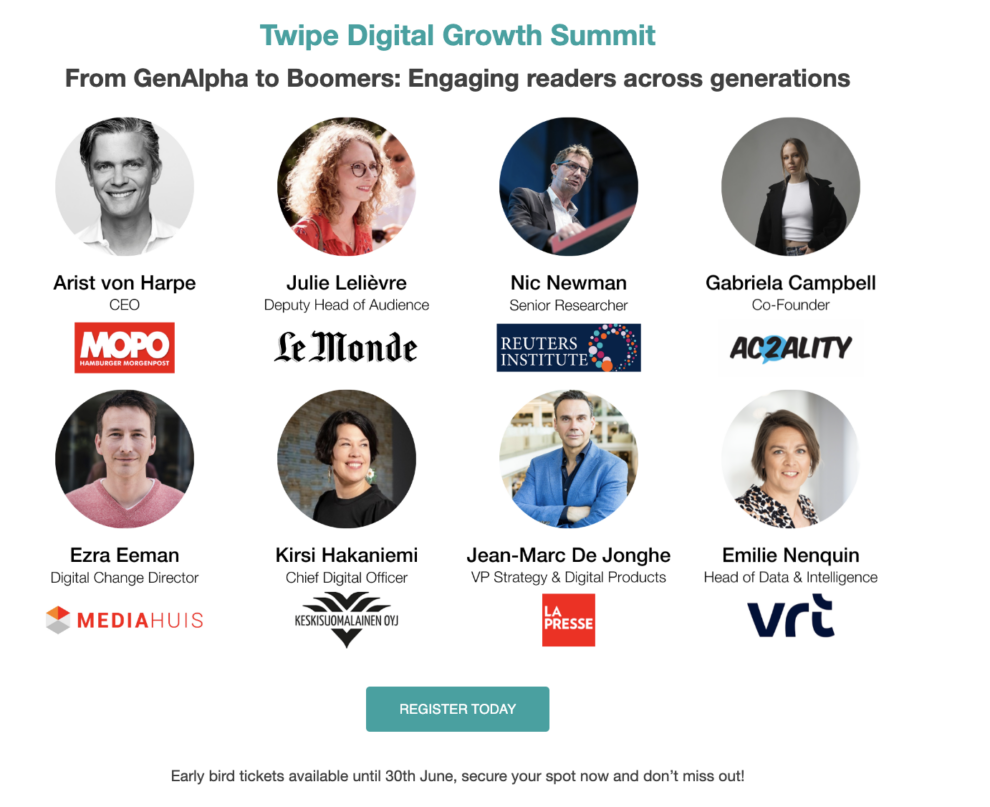
🍿 Other Brain Snacks from around the congress:
- Nick Thomson told us that audio will be everywhere, that we have to prepare for quantum and that the metaverse and web3 visions will come true but will still need about 7 years
- Robert Whitehead asked people in the room to share the reasons they avoid news. Interestingly, even in an audience full of news media professionals, the testimonials kept coming. “There’s clearly a need for some group therapy” – Robert concluded
- During NYT’s presentation about their dynamic meter used for showing a paywall an interesting discussion was started on wether a similar technology could be used for serving the right amount of advertising to people
- AI voice clones of editors voices used for voice over have higher engagement with younger people at Schibsted
- “News tastes like chicken. It’s good but it’s the same everywhere” – quoted during a panel discussion on encouraging publishers to find unique value.
Other Blog Posts

Stay on top of the game
Join our community of industry leaders. Get insights, best practices, case studies, and access to our events.
"(Required)" indicates required fields
